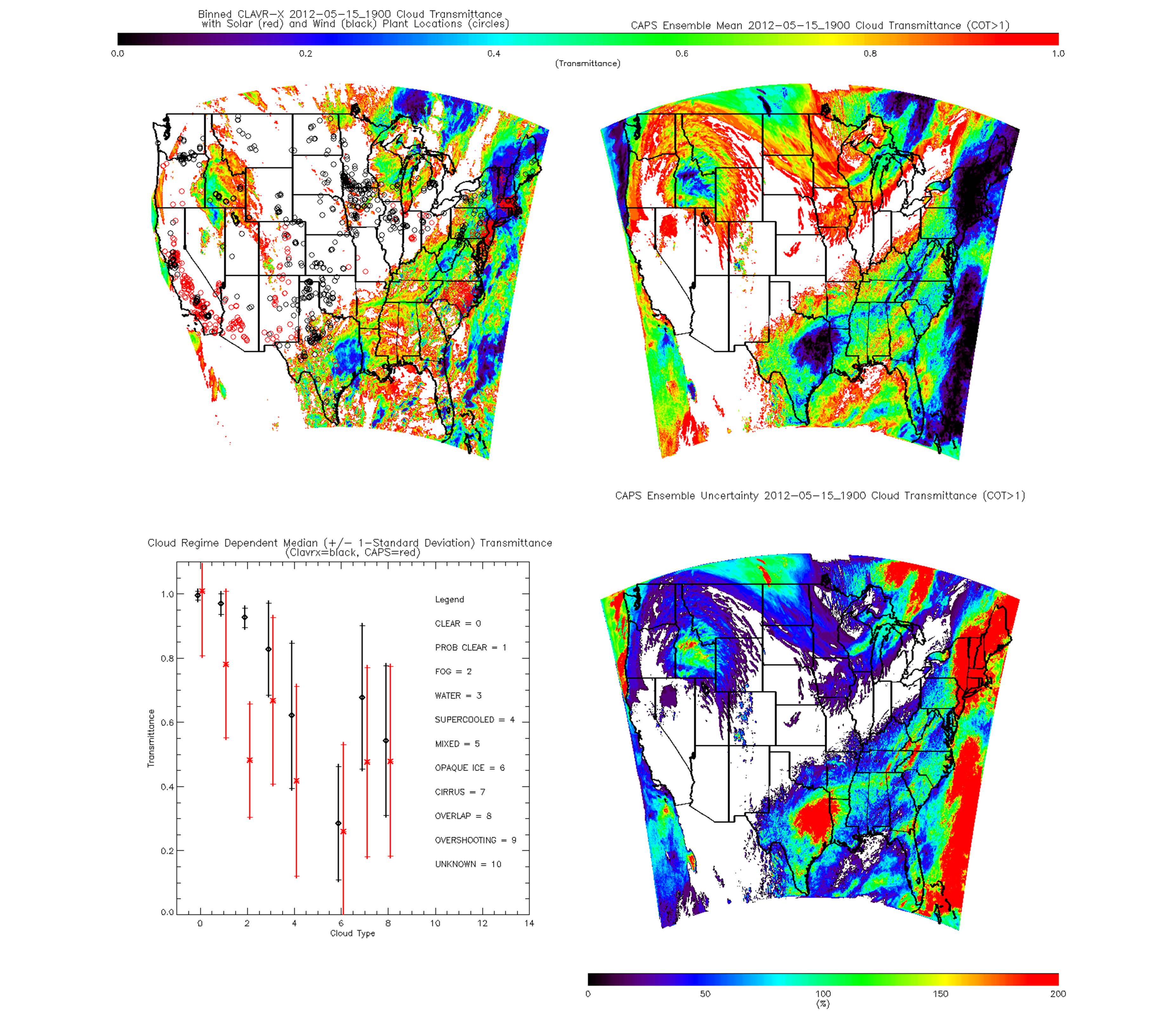
[ Archive ]

 |
CIMSS-NOAA Weekly Report
[ Archive ] |
 |
IN THE PRESS:
ITEMS FOR THE ADMINISTRATOR:
ITEMS FOR THE ASSISTANT ADMINISTRATOR:
ITEMS FOR THE OFFICE DIRECTOR, STAR:
UW2020 RECORDS Proposal Selected: A proposal entitled “UW2020 RECORDS: Reserve Energy Co-Optimization with Real-time Data from Satellites” was one of 14 highly innovative projects selected for funding out of 134 proposals to the Wisconsin Alumni Research Foundation (WARF) Discovery Initiative (UW2020, https://research.wisc.edu/resfunding/uw2020-initiative/). The UW2020 initiative funds research projects that have the potential to fundamentally transform a field of study as well as projects that require significant development prior to the submission of applications for external funding. The UW2020 RECORDS team is led by University of Wisconsin Professor Michael C. Ferris (Wisconsin Institutes for Discovery and Computer Sciences Department) and includes faculty from the Electrical and Computer Engineering Department, Atmospheric and Oceanic Sciences Departments, the Cooperative Institute for Meteorological Satellite Studies (CIMSS), and scientists from NOAA/NESDIS Center for Satellite Applications and Research (STAR) Advanced Satellite Products Branch (ASPB). The RECORDS team will develop and validate techniques to use retrievals from the Clouds from the AVHRR Extended (CLAVR-x) in conjunction with ensemble cloud transmissivity forecasts from the University of Oklahoma Center for Analysis and Prediction of Storms (CAPS) ensemble to provide bias-corrected solar energy forecasts. These forecasts will be used to develop stochastic optimization strategies to stabilize the wind and solar power generation across the National electrical grid (R.B. Pierce, E/RA2, 608-890-1892, brad.pierce@noaa.gov, A. Heidinger, E/RA2, 608-263-6757, andrew.heidinger@noaa.gov, J. Otkin, CIMSS, 608-265-2476, J. Gerth, CIMSS, 608-263-4942, T. L'Ecuyer, AOS/SSEC, 608-890-2107, S. Ackerman, AOS/CIMSS, 608-263-3647)
 (Click image to enlarge)
(Click image to enlarge)
Figure caption: This figure illustrates how the CLAVR-x retrievals will be used to provide a regime-dependent bias correction to the CAPS ensemble mean cloud forecast by considering a specific time period (19:00 GMT on May 15, 2012). The upper left panel shows the CLAVR-x cloud transmittance retrieval, binned into the CAPS ensemble model 4km grid. The locations of solar (red) and wind (black) power generation facilities are indicated by the circles. The upper right panel shows the CAPS ensemble mean cloud transmittance forecast and the lower right panel shows the estimated uncertainty in the CAPS ensemble transmittance forecast (%) based on the ensemble variance. The lower left panel shows the median and standard deviations of the observed (black) and forecast (red) transmittance for each observed cloud regime (clear, probably clear, fog, water cloud, super cooled water, mixed water/ice, opaque ice, cirrus, overlap, and overshooting). Clear scenes have a transmission of 1 meaning that all the incident solar radiation reaches the surface. Opaque ice clouds are found in regions of extensive high cloudiness (Eastern Texas for example) and have the lowest transmittance, meaning that much of the solar radiation does not reach the surface. The CAPS ensemble mean transmittance is found to be systematically low for all cloud regimes with the largest biases found for fog and low cloud scenes. Relatively low biases are found for opaque ice clouds. However, the uncertainty in the CAPS ensemble mean transmittance is largest for low transmittance clouds.
GSIP Algorithm Readiness Review: An Algorithm Readiness Review (ARR) for the GOES Surface and Insolation Product (GSIP) was held and passed this week. GSIP is a version of the Clouds from AVHRR Extended (CLAVR-x) system that processes GOES and Meteosat data into cloud, surface and solar energy products and has been operational since 2000. The main customer of GSIP is the land data assimilation system used by the NOAA operational numerical weather predication models. GSIP and CLAVR-x both run the same version of the NOAA Enterprise algorithms run in NOAA/NESDIS Operations. The generation of the GSIP products will be done by the STAR Algorithm Processing Framework (SAPF) next year. (A. Heidinger, E/RA2, 608-263-6757, andrew.heidinger@noaa.gov, S. Wanzong, CIMSS, steve.wanzong@ssec.wisc.edu, W. Straka, CIMSS, wstraka@ssec.wisc.edu)
ITEMS FOR THE DIVISION CHIEF, CoRP:
Invited talk given at International Symposium on Tropical Meteorology and Marine Science: Jun Li gave an invited talk entitled "The roles of satellite measurements in monitoring, understanding and predicting tropical cyclones" at the International Symposium on Tropical Meteorology and Marine Science held in Guangzhou China, 7 - 9 April 2016. About 180 scientists from Asia, Europe and U.S. attended the symposium. The topics discussed during the meeting include extreme weather monitoring and predicting, tropical marine disaster monitoring and forecasting, satellite data applications, monsoon variation, climate prediction and service, etc. Jun Li's trip was supported by the local organizer. (Jun Li, Jun.Li@ssec.wisc.edu, 608-262-3755)
CIMSS VISIT Activities: The Virtual Institute for Satellite Integration Training (VISIT) lesson "NOAA/Cooperative Institute for Meteorological Satellite Studies (CIMSS) ProbSevere Product" (http://rammb.cira.colostate.edu/training/visit/training_sessions/noaa_cimss_probsevere_product/) was presented by S. Lindstrom on April 5 and 7, 2016. Staff from National Weather Service forecast offices at Midland, Texas, Phoenix, Arizona, Indianapolis, Indiana, and Grand Rapids, Michigan participated in the training. (S. Lindstrom, CIMSS, 608-263-4425)
Manuscript Accepted for Publication: The manuscript "Comment on ‘Roles of interbasin frequency changes in the poleward shifts of the maximum intensity location of tropical cyclones’" by James Kossin, Kerry Emanuel, and Gabriel Vecchi has been accepted for publication in Environmental Research Letters. (J. Kossin, NCEI, 608-265-5356)
VISITORS:
NEXT WEEK:
LOOKING AHEAD:
| Archived Weeklies Page | Submit a report item |